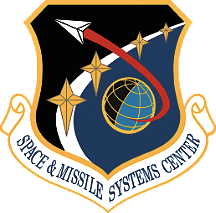Increasing international military activity and interest in the Arctic calls for improved monitoring, and the Space and Missile Systems Center is working to deliver the next generation of missile warning satellites.
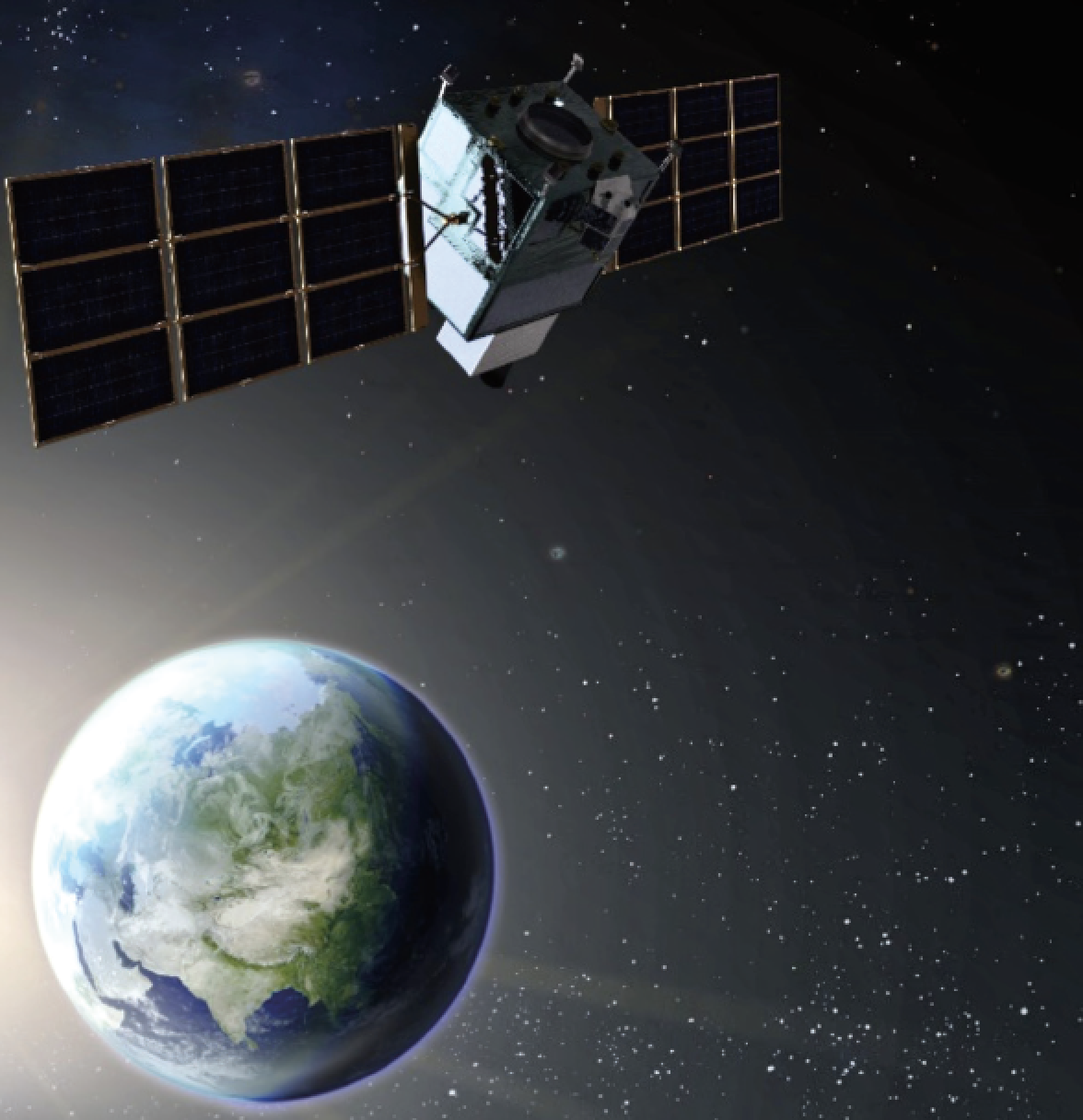 Rendering of the Next-Gen OPIR Polar satellite in the deployed configuration with a view of the North Pole and key threat regions. Image is courtesy of Northrop Grumman.
Rendering of the Next-Gen OPIR Polar satellite in the deployed configuration with a view of the North Pole and key threat regions. Image is courtesy of Northrop Grumman.
The Next-Gen Overhead Persistent Infrared (OPIR) Polar Constellation, which will be operational by 2030, consists of two polar-orbiting missile warning systems built by Northrop Grumman Space Systems. The constellation is part of the survivable, resilient Next-Gen OPIR architecture and ensures full missile warning coverage of the arctic.
The Next-Gen Polar satellites will provide unblinking missile warning capability over the Arctic region and offer significant battlespace awareness and technical intelligence capabilities. It’s one of the critical mission areas of the U.S. Space Force.

Lt. Gen. John F.
Thompson
“The increasingly contested nature of space makes it imperative that we continue to intensify the resiliency of U.S. spacebased capabilities,” said Lt. Gen. John F. Thompson, SMC Commander and Program Executive Officer for Space. “To that end, we are partnering with the Space Development Agency (SDA) and the Missile Defense Agency (MDA) to transform our missile warning/ missile tracking architecture, prototyping efforts across multiple orbits and proliferated constellations.”
Thompson added, “Working closely with our mission partners ensures we’re addressing the threat. We’re assuring clear lines of effort to maximize technological innovation and prevent overlap. Further, our Next-Generation OPIR program will serve as the backbone of our missile warning architecture to assure this critical and dominant capability into the future.”

Col. Daniel T. Walter,
Next-Gen OPIR
Program Manager at SMC
“People often ask what is so hard about this mission,” said Col. Daniel T. Walter, Next-Gen OPIR Program Manager at SMC. “Detecting a missile is not the most difficult thing we do. The challenge is ensuring we never get one wrong; never have a false positive and never miss one. We can never wake up the president with a false alarm and we can never miss a missile that’s being fired upon us or our allies. We take our mission extremely seriously.”
What makes this new constellation “next generation” is that it will augment, then eventually replace, the Space Based Infrared System (SBIRS), a series of satellites in Geosynchronous Earth Orbit (GEO) and sensors hosted on other satellites in Highly Elliptical Orbit (HEO). The first of this constellation was launched in 2011; two additional GEO satellites will be launched, one this year and one a year later.

Sarah Willoughby,
Vice President of
OPIR and the
geospatial systems
business unit for
Northrop Grumman
and Program Manager
for Next-Gen OPIR Polar
“Unlike the SBIRS HEO satellites, the Next-Gen OPIR Polar satellites will be “free flyers” — not hosted on another satellite’s payload — and Northrop Grumman has leveraged the enhanced payload capacity to improve performance and resilience,” said Sarah Willoughby, Vice President, Northrop Grumman for that firm’s OPIR and Geospatial Systems Business Unit.
She noted, “In the context of the evolving and emerging threat, these polar satellites are in the fight as you consider the potential extension of conflict into the space domain. We really will have improved coverage of the northern hemisphere. We compliment GEO coverage and it gives us flexibility as conflict escalates to ensure that we have the missile warning coverage and can supply OPIR data to the command and to the warfighter.”
In addition to the two Polar satellites being built by Northrop Grumman, Lockheed Martin is building three, Next- Gen OPIR satellites for a geosynchronous orbit.

Lt. Col. Joshua Wehrle,
Materiel Leader, Next
Gen OPIR – Polar,
Space Development
Corps at SMC.
“There are a number of critical capabilities that make these assets unique,” said Lt. Col. Josh Wehrle, Materiel Leader, Next-GEN OPIR – Polar, for SMC. “The Next-Gen OPIR Polar and GEO satellites have greater sensing capability than our current constellation to better detect the growing arsenal of missiles across the globe. They also have better capability to adapt to operate through multiple threats that seek to deny our ability to operate.”
He noted, “SBIRS and Next-Gen OPIR support four mission areas: missile warning; supporting missile defense; battle space awareness and technical intelligence – providing the intelligence community, combatant commanders, and senior leaders with information from space.”
For SBIRS HEO, SMC developed a sensor and integrated it as an auxiliary payload on a host satellite. For Next-Gen OPIR Polar, SMC is acquiring the entire space vehicle so the government can specifically address mission resiliency, Walter said.
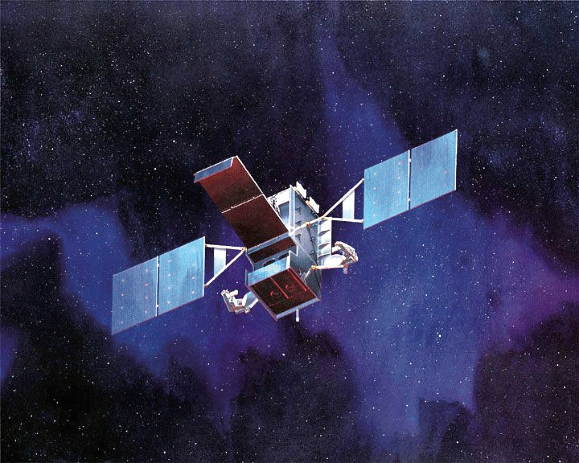
Artistic rendition of the Space-Based Infrared System
(SBIRS). Image is courtesy of Lockheed Martin.
“The counter-space threat has evolved, and we’ve deliberately designed these satellites to ensure they can counter the broad range of adversary threats,” Walter said. “Secondly, the targets have gotten harder and we have more capacity in our sensors (with Next-Gen OPIR) to be able to detect and report on a broader range of globally available missiles.”
“The Next-Gen OPIR Polar effort is a result of the U.S. Space Force leaning forward and adapting to new and emerging threats,” Wehrle said. “Our adversaries are not slowing down development; the U.S. Space Force (USSF) and U.S. Department of Defense must ensure we maintain an asymmetric advantage. That is the purpose of the Next-Gen OPIR: adapt, and emerge ahead of the threat.”
“Its primary job is to watch the cold background of the Earth’s surface and look for any ‘hot’ spots,” Walter explained. “Any time a hot spot is detected, the sensor will process it and make sure it’s capable of identifying it either as a missile or something else.”
Polar orbit satellites typically launch from Vandenberg AFB, fly down over the South Pole and then up to cover the North Pole, Walter said. One issue with the GEO “look angle” is that they don’t have the best angle to see the North Pole. A HEO orbit provides better coverage.
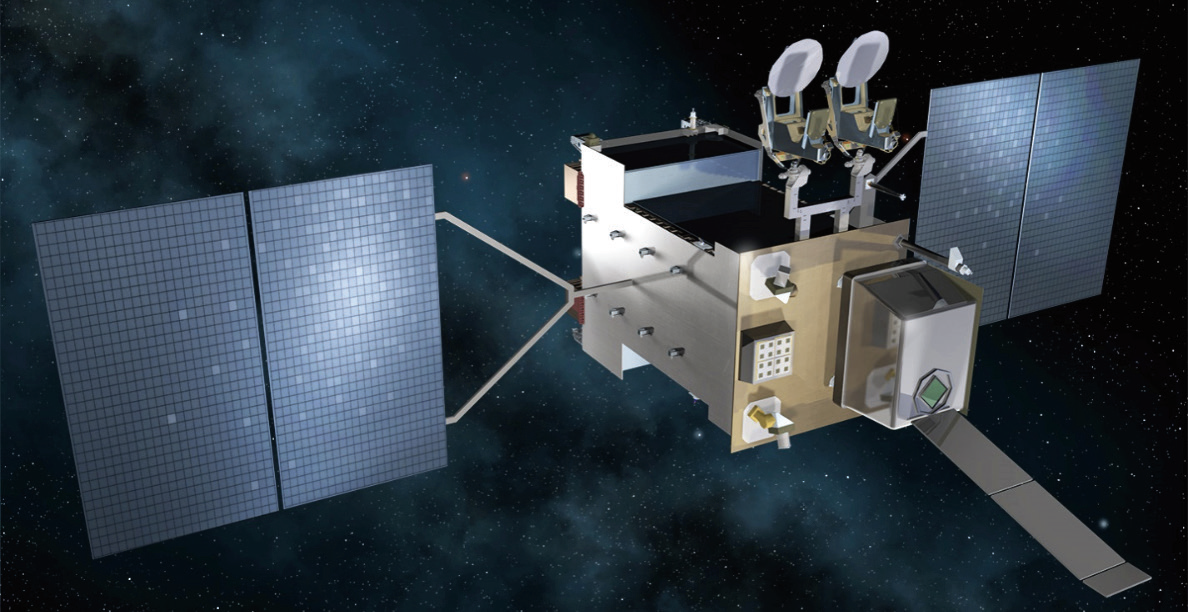
Artistic rendition of the Next-GEN OPIR GEO satellite.
Image is courtesy of SMC.
“Our allies have a high degree of dependence and reliance on the missile warning capability of DSP, SBIRS, and Next- Gen OPIR,” Walter said. “While we are the ones developing and ensuring it’s going to be launched, all of our partner countries benefit from the missile warning information that it generates.”
“SMC is also developing a ground system that will eventually process data not only from SBIRS, but also from Next-Gen OPIR satellites – Future Operationally Resilient Ground Evolution, or FORGE,” said Lt. Col. Eric Reinhart, Chief of Missile Warning Capability Area Integration at SMC. “FORGE will not only be able to work with SBIRS and Next- Gen OPIR, but because it uses an open, scalable, and modular architecture, its adaptability will allow it to support a variety of space-based Missile Warning and Missile Tracking assets long into the future.”
He added, “Many think of it as similar to an Apple iPhone – FORGE is a platform that can easily host the various apps needed to support multiple sensors whereas the current SBIRS ground system requires much more of an effort just to support one new sensor. FORGE is an open architecture.” “FORGE is the future common denominator of the current SBIRS constellation and the Next-Gen OPIR system, and the future capability that will augment the entire OPIR architecture,” Wehrle explained. “Without FORGE and the team of professionals working on the ground, our satellites, no matter how technically capable they are, have no way delivering critical data to the network of users and warfighters.”
Reinhart said SMC is working with MDA, SDA and other a agencies to define what the Missile Warning and Missile Tracking architecture beyond Next-Gen OPIR will look like.
“You have to continue planning this work years in advance,” Reinhart said. “We’re already looking at the architecture beyond Next-Gen OPIR, which takes us to the year 2030 plus. You have to continue to refine and look at how you’re going to advance the mission area. Introducing new technologies – at the right time – is important as we continue to advance our capabilities.”
The USSF’s Space and Missile Systems Center portfolio includes space launch, global positioning systems, military satellite communications, a defense meteorological satellite control network, range systems, space-based infrared systems, and space situational awareness capabilities.
Contact Space & Missile Systems Center at SMC@Spaceforce.mil and follow us on LinkedIn.
Defending Over The North Pole
The Arctic region is critical to U.S. national security and the defense of not only the United States, but its allies, with the U.S. Air and Space Forces providing most of U.S. Department of Defense resources to that region.
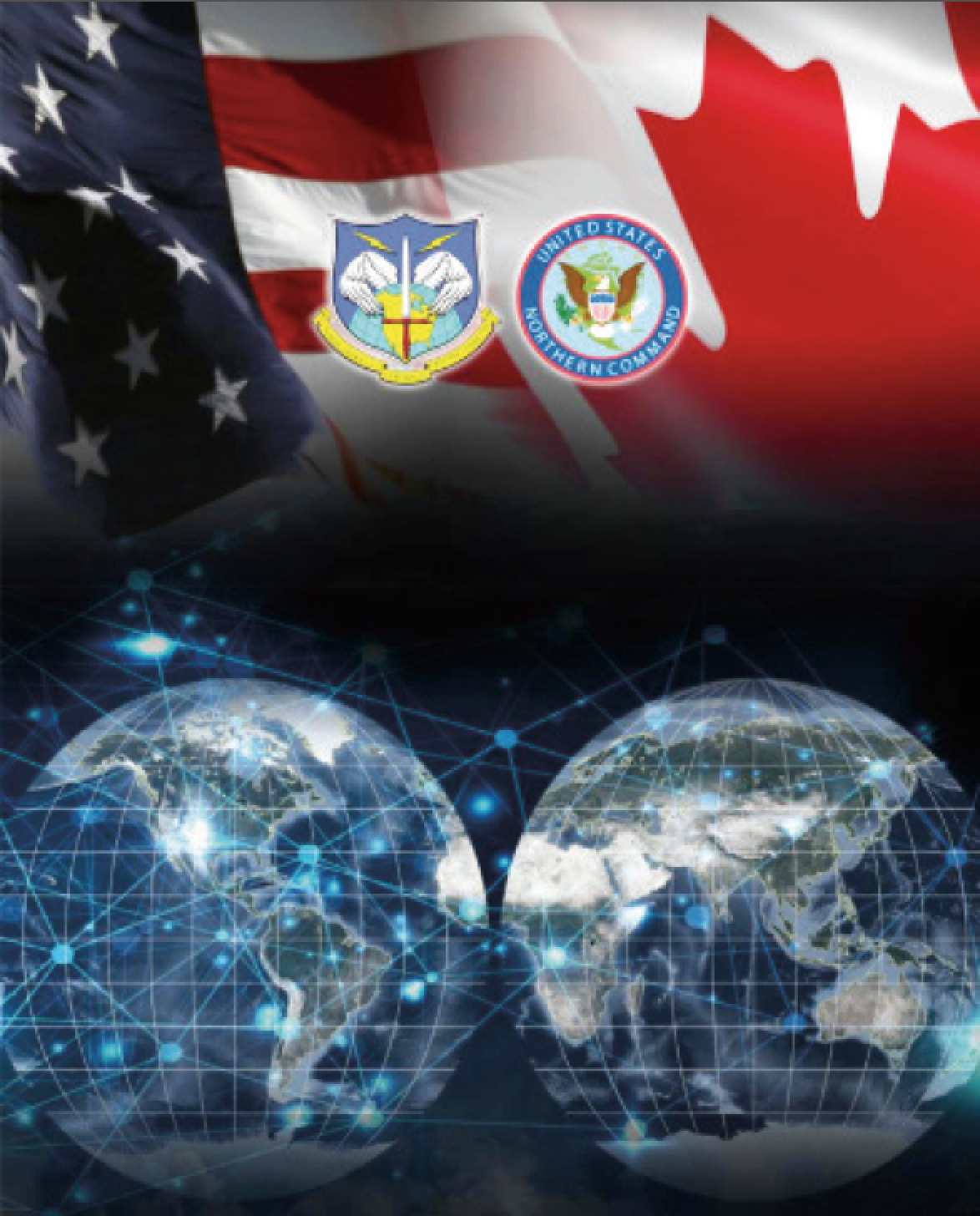
U.S. Air and Space Force assets in the region include two Alaskan air bases — Joint Base Elmendorf-Richardson and Eielson Air Force Base, and other strategic facilities. There is also the Alaska Radar system and the more than 50 radars that comprise the North Warning System across Canada operated by the North American Aerospace Defense Command (NORAD), a joint U.S. and Canadian effort that provides aerospace warning, air sovereignty and protection for North America.
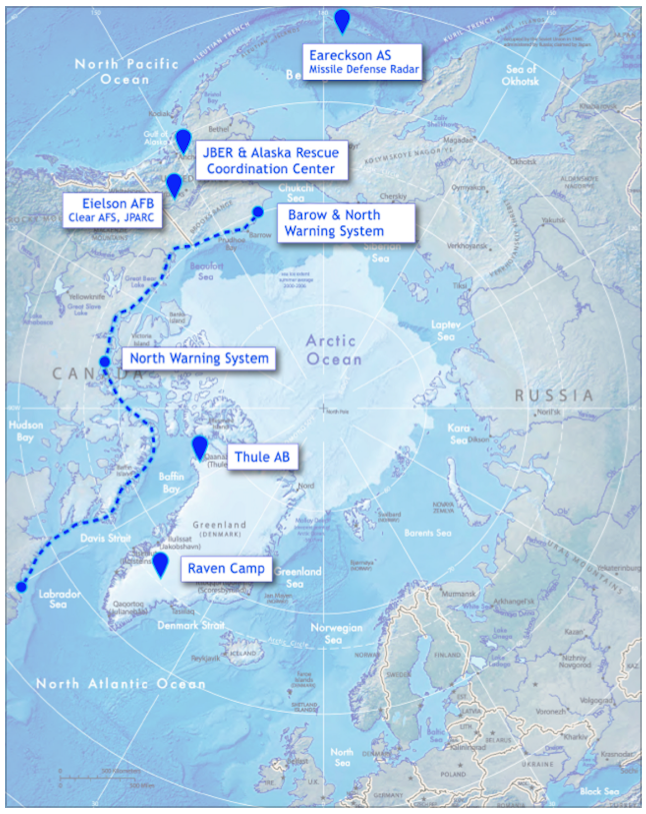 The Arctic region is home to eight nations and is strategically important to the United States and its allies. Shown here are just a few of the military resources operated by the U.S. Department of the Air Force.
The Arctic region is home to eight nations and is strategically important to the United States and its allies. Shown here are just a few of the military resources operated by the U.S. Department of the Air Force.
“The Arctic region has always been important,” said Col. Daniel T. Walter, SMC Next-Gen OPIR Program Manager. “And, as climate change introduces more commercial shipping traffic into the Arctic, polar monitoring becomes more vital.”
“All the more reason that it’s the best mission from space,” Walter said. “It’s hard to have and maintain a global cost- effective ground-based architecture. From space – from the ultimate high ground – we’re able to do these missions very well.”
Over the North Pole is often the quickest route for the United States to reach a number of regions around the globe — and vice versa — and preserving that access for the U.S. and its allies is another reason why the Arctic is so critical to U.S. interests, said Lt. Col. Eric Reinhart, Chief of Missile Warning Capability Area Integration at SMC.
“It’s not just security interests that are critical in the Northern Hemisphere – there’s a threat to U.S. economic interests as well,” said Lt. Col. Josh Wehrle, Materiel Leader, Next-GEN OPIR, Polar for SMC, noting the Arctic oil and gas reserves.
The shipping routes comprising the Northeast Passage, Northwest Passage and Central Passage that cross the Arctic Circle and connect the three economic centers of North America, East Asia and Western Europe are dubbed the “Polar Silk Road.” This is a 25 percent shorter route for China than via the Suez Canal and China has increasingly sought to increase its influence in the region, Wehrle noted.
According to North American Aerospace Defense Command’s (NORAD) Arctic Strategy, both Russia and China are increasingly active in the Arctic: “Russia’s fielding of advanced, long-range cruise missiles capable of being launched from Russian territory, flying through the northern approaches, and seeking to strike targets in the United States and Canada has emerged as the dominant military threat in the Arctic.
“Additionally, diminished sea ice and competition over resources present overlapping challenges in this strategically significant region. China is not content to remain a mere observer in the growing competition, declaring itself a ‘near- Arctic state,’ and has taken action to normalize its naval and commercial presence in the region to increase its access to lucrative resources and shipping routes.”


Gen. Glen D. VanHerck,
Commander, United States
Northern Command and
North American Aerospace
Defense Command
In testimony before the Senate Armed Services Committee in March 2021, U.S. Air Force Gen. Glen D. VanHerck, commander of the U. S. Northern Command (USNORTHCOM) and NORAD, said U.S. and Canadian armed forces were in the early stages of modernizing NORAD and building additional military capabilities in the Arctic.

“In coordination with the Missile Defense Agency, the United States Strategic Command and USSPACECOM, we’re maintaining and improving upon our ballistic missile defense capabilities,” VanHerck said. “We’re placing significant emphasis on a left-of-launch framework that will provide decision space for our senior leaders, enabling deterrence and de-escalation options vice end-game defeat.”

“We’re advocating for investment in all-domain awareness to generate a layered sensing grid and a layered defense approach that emphasizes the use of an open-sensor data architecture and machine-enhanced processing in order to achieve information dominance and decision superiority,” VanHerck continued. “Through these efforts, we will grant decision-makers the increased decision space and build upon flexible response options to deter, deny or defeat every threat to the United States and Canada.”

Currently, NORAD and USNORTHCOM have the capability to defend the continental United States and Hawaii against a limited number of missiles from North Korea, VanHerck said. However, capacity will be the most pressing issue in the future.
